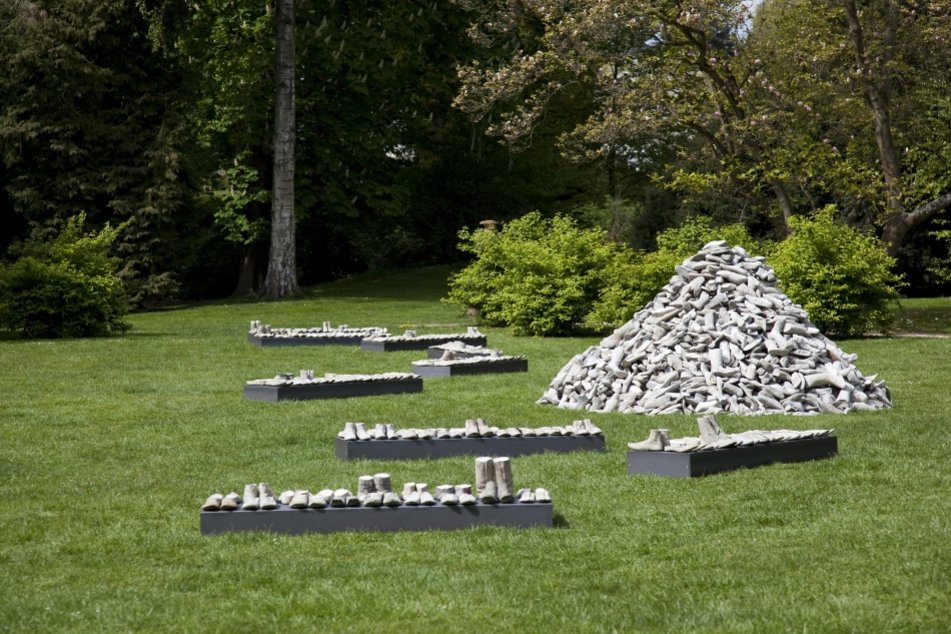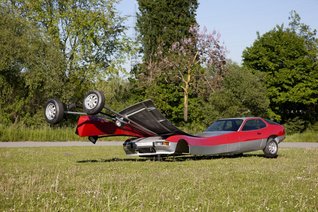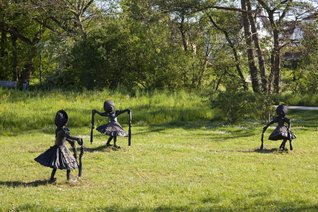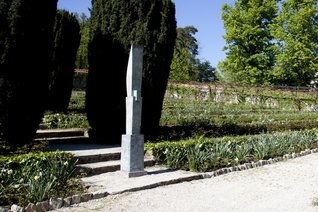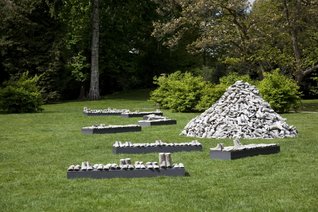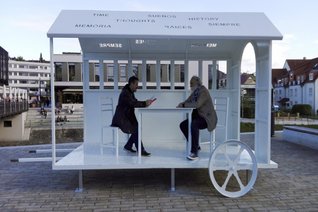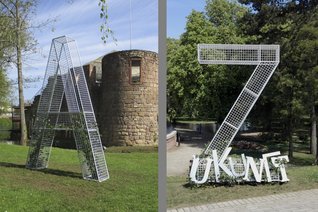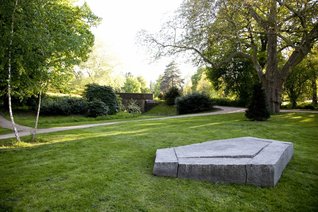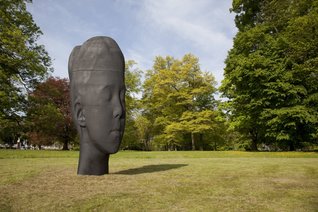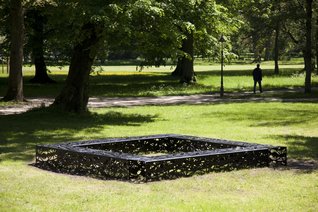Karl Prantl
(Austria) *1923 in Pöttsching; †2010 in Pöttsching
The Austrian artist Karl Prantl, whose four-part work “Meditationssteine” (Meditation Stones) was exhibited in the very second “Blickachsen”, ranks as a pioneer in the field of abstract sculpture. He always created his large-format stone sculptures without the use of sketches or models. His refusal of exact blueprints may well be due to his belief that his art should be in harmony with its stone material – with all its physical as well as spiritual properties. Thus for Prantl, the original shape, colour, texture and surface structure of a piece of stone serve as the inspiration and starting point for his artistic work. “Blickachsen 11” is showing four of his works, in Bad Homburg and Kronberg. The black Canadian granite, from which both the works in the Bad Homburg Kurpark, “7 Anrufungen” (“7 Invocations”) and “Anrufungen”, are made, continues, even after its reworking by the artist, to bear witness to its original weight, density and solidness. Despite their monumentality, both works exude a feeling of peace and constancy, rather than oppressive massiveness. In addition, their soft, smooth surfaces, with their circular cavities, lend the works a highly appealing tactile quality.
With his 1959 Sculptors’ Symposium in the stone quarry at St. Margarethen, the Austrian artist Karl Prantl advanced the idea of international sculptors not only living and working together near the source of their stone, but also of publically presenting their works in the natural landscape. This form of collaborative working quickly spread around the world. For Prantl, working in the open countryside constituted an important part of his practice of sculpture. The idea of creating sculptures in a dialogue with the outdoor space shaped his monolithic works, which radiate a sense of calm. His sculptures on display in “Blickachsen 11” shine a light on his nuanced approach to the most diverse types of stone. Whereas in Bad Homburg, two of his works in Canadian granite can be seen, in Kronberg, his “Ring”, with its smoothly polished surface, is made from serpentine. His almost cubic “Meditation Stone”, on the other hand, is sculpted from Norwegian labradorite, with rows of pearl-shaped protuberances on its top side. All invite the observer literally to ‘grasp’ them – that is, to a thoughtful and sensual, a tactile as well as an optical, experience.
